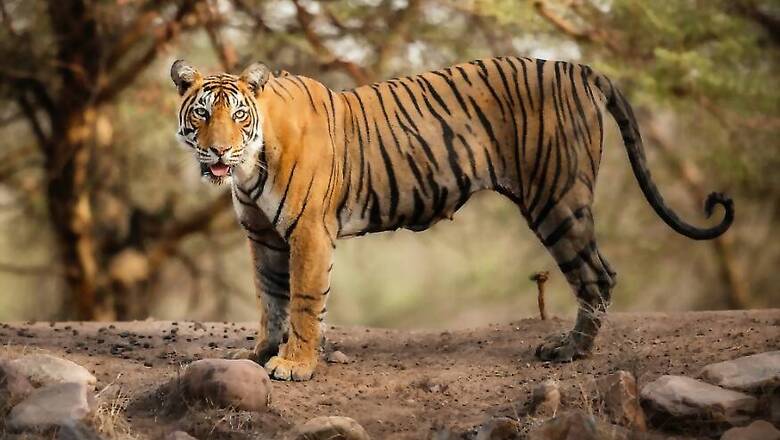
views
Genetic diversity in tigers and a healthy flow of genes by enabling movement of tigers between different tiger habitats holds the key for sustainable conservation of the striped cats, studies have shown in the past. Now, a new study has established that whole body hair that tigers shed on the forest floor are a viable source for sequencing their whole genome. This can also be used to establish previously unknown family links between tigers.
The study identified two new matrilines in Ranthambore Tiger Reserve and previously unknown possible links between a few tigers and Machali, the deceased tigress who was considered as a matriarch of the Ranthambore forests.
It was found that a few of the tigers were more related to each other as compared to others, thus once again suggesting inbreeding in Ranthambore. Past studies, too, have shown that tigers in Ranthambore are genetically isolated due to poor linkages with other tiger habitats.
The study, published in Ecology and Evolution is co-authored by researchers at the National Centre for Biological Sciences (NCBS), Bengaluru and senior forest officers of the Rajasthan Forest Department. The matrilineages were corroborated with the help of records of family trees maintained by the forest department.
As part of the research, the team followed 34 tigers over 255 days during three field seasons between May 2017 and June 2018. Once the tigers moved from a spot, the team members collected their shed hair and samples from 207 sitting sites of the tigers. The genome of six tigers, including that of Machali, was sequenced and it was established that sequences obtained from whole hair are as reliable and match 96% of the sequence obtained from blood.
“Using whole hair to sequence genomes helps us to understand how to save these tigers that are inbred. We can understand how to add beneficial variants. Our study also scientifically authenticates the forest department's records on different lineages in Ranthambore,” said Anubhah Khan, lead author and research scholar, NCBS.
A genome contains the complete genetic information of an organism and is usually sequenced using DNA sources such as blood, tissue and even fecal samples. Collection of good quality DNA from large carnivores though, is always a challenge. Scientists often rely on dead animals or their fecal samples to sequence genome and study them for genetic diversity and relations between individual animals.
From a biological perspective, this data will be critical to understanding the impacts of isolation (and connectivity) on the genetic variation of particular populations, and for the study of particular individuals, the researchers said.
Ensuring flow of genes across different tiger landscapes has been the focus of many studies recently. The spotlight on this issue has increased with the rise in fragmentation of contiguous forested patches due to infrastructure projects, such as highways, transmission lines, canals and rail lines.
A 2017 study published in Scientific Reports had also researched genetic composition of tigers and found that the northwest cluster found in Ranthambore was the most isolated with low variation and high relatedness. In contrast, tigers from central, north and northeastern India had high variation, suggesting more connectivity between the landscapes.



















Comments
0 comment